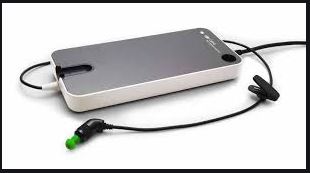
DPOAE Overview
Distortion product otoacoustic emissions (DPOAE) are generated in the cochlea when the outer hair cells amplify and propagate particular sounds along the basilar membrane in response to two tones separated by a fixed ratio and played from separate sound sources (or speakers). DPOAE can be measured from the external auditory canal, making them an efficient screening and diagnostic tool in the study of hearing and hearing loss. Researchers who study DPOAE are interested in the energy or power of the Distortion Product as a function of the power of the sound sources.
Distortion Product Otoacoustic Emissions (DPOAE) are distorted sounds generated by the cochlea’s outer hair cells in response to two tones that are close in frequency. The presence of a DPOAE response is an indication that the cochlear amplifier is functioning properly. Typically, DPOAEs cannot be detected in ears with sensory hearing loss greater than or equal to 30 dB HL or with signs of middle ear abnormalities.
Clinical Applications
- Detects outer hair cell function
- Assists in identifying the cochlear component of a hearing disorder
- Detects minor changes in a specific frequency range as in noise-induced hearing loss or ototoxicity
TEOAE
Transient Evoked Otoacoustic Emissions (TEOAE) are sounds generated by the cochlea’s outer hair cells in response to a transient click. The presence of a TEOAE response is an indication that the cochlear amplifier is functioning properly. TEOAEs are an indicator of outer hair cell function in the range of about 750 Hz to 4 kHz. Typically, TEOAEs cannot be detected in ears with sensory hearing loss greater than or equal to 30 dB HL or with signs of middle ear abnormalities.
OAEs can be used for hearing screening in newborn children. Normal hearing infants have an evoked response to DPOAE or TEOAE testing. However, when an infant’s outer ear, middle ear, or inner ear obstructs the passage of sound, an OAE response will not be evoked.
Clinical Applications
- Detects outer hair cell function
- Assists in identifying the cochlear component of a hearing disorder
- Widely used by newborn hearing screening programs to detect sensory hearing loss
Click here to Make an Appointment – Digihearingsolutions
